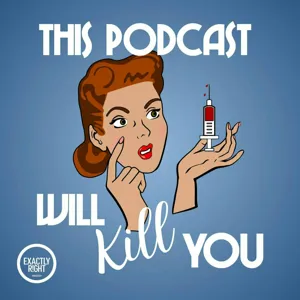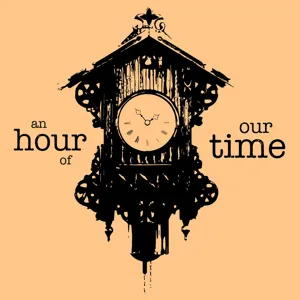Podcast Summary
The Battle of Shiloh: A Turning Point in the American Civil War: The Battle of Shiloh, fought in the Western Theater, was a significant strategic victory for the Union Army due to its massive scale, devastating casualties, and control of the Mississippi River.
The Battle of Shiloh in the American Civil War, which took place in the western theater and was fought in dense woods and swamps, was a turning point in the war due to its massive scale and devastating casualties. With over 100,000 soldiers from both sides engaged, it was unlike any battle that had preceded it. The importance of controlling the Mississippi River and the Western Theater made this engagement a significant strategic victory for the Union Army, led by Ulysses S. Grant. The aftermath of the battle was grisly, with horrendous casualty figures and the ferocity of the fighting leaving a lasting impact on the course of the war. This lesser-known legend from the Civil War highlights the importance of strategic advantage and the significance of battles beyond the traditional battlefield stereotypes.
The power of curiosity and preserving historical tales: A man's fascination with a 150-year-old Civil War legend led to the discovery of a possible explanation, highlighting the importance of curiosity and the value of sharing historical stories.
The legend of the glowing soldiers from the American Civil War, a tale that has been passed down through history and even resurfaced on Reddit, captivated a man named Bill Martin. This quiet UPS worker and fiction writer was drawn to the strange story due to his childhood fascination with the Civil War. The tale, which involves wounded soldiers emitting a bluish greenish glow at night, was not just intriguing because of its eerie nature but also because many of these soldiers reportedly healed from their injuries. For 150 years, the reason behind this phenomenon remained a mystery until Bill took an interest. This story serves as a reminder of the power of curiosity and the importance of preserving and sharing historical tales, even those that may seem strange or forgotten. It also highlights the infectious nature of historical passion and the connections that can be made through online communities like Reddit.
The Battle of Shiloh: A Turning Point in Military Technology and Medicine: The Battle of Shiloh saw soldiers armed with advanced rifled muskets, causing more damage and increasing infection risk. Doctors began using anesthesia, but lack of resources and organization led to high fatality rates from infection, resulting in approximately 750,000 deaths during the Civil War.
The Battle of Shiloh during the American Civil War marked a significant turning point in military technology and medicine. Soldiers were armed with more advanced rifled muskets, which caused more damage due to their ability to carry clothing and dirt into wounds, increasing the risk of infection. The chaos on the battlefield made it difficult to evacuate and treat the wounded, leading to a high fatality rate from infection rather than bullet wounds. The Civil War represented a transition period for American medicine, with doctors beginning to understand the human body and using anesthesia for surgeries. However, the lack of resources and organization on the battlefield hindered their ability to effectively treat and save lives, resulting in an estimated 750,000 deaths, two-thirds of which were due to disease.
The unexplained phenomenon of 'Angel's Glow' during wars: During wars, soldiers with open wounds in cold conditions reported a bluish-green glow around their injuries. This phenomenon, known as 'Angel's Glow', was likely due to a chemical reaction between the wound, cold, and copper, but persisted due to lack of historical records and belief in healing properties.
During the Civil War and Crimean War, soldiers with open wounds in cold conditions reported experiencing a bluish-green glow around their injuries. These stories, passed down from soldier to soldier, were never officially documented but gained the name "Angel's Glow" due to the belief that these soldiers healed faster than those without glowing wounds. The phenomenon remained unexplained until a science project in 2001, when a mother-son team discovered that the glow was likely due to a chemical reaction between the wound, the cold, and the presence of copper. Despite the lack of definitive historical records, the legend of Angel's Glow persisted due to its widespread occurrence on various battlefields. This anecdote serves as a reminder of the importance of skepticism and scientific inquiry in understanding historical phenomena.
Thinking critically and telling stories effectively: Bill Martin's science project and the Wired Politics Lab demonstrate the importance of critical thinking and storytelling in navigating complex problems and information overload.
The ability to think critically and tell stories effectively, regardless of the order, is crucial in navigating the vast world of news and information. Bill Martin, a shy teenager with a learning disability, exemplified this concept through his ambitious science fair project, which involved using bacteria to control insects. His mother, Phyllis Martin, a retired USDA Department of Agriculture employee with expertise in insect biocontrol, provided valuable insights and access to a new bacteria called photorhabdus luminescens. This bacteria, which glows, became a fascinating element of their science project. Phyllis' work in insect biocontrol, specifically using bacteria to control insects without chemicals, demonstrates the importance of thinking creatively and critically to solve complex problems. Similarly, the Wired Politics Lab show aims to help people navigate the endless stream of news and information by providing insights into various online platforms, AI chatbots, and influencer campaigns. Ultimately, both Bill's science project and the Wired Politics Lab show underscore the importance of being able to think critically and tell compelling stories, regardless of the order in which they are presented.
Glowing bacteria and nematodes in soil: The glowing bacteria, Photorhabdus luminescens, associated with nematodes in soil, can potentially explain historical glowing wounds if discovered in cooler battlefield conditions
The glowing bacteria, Photorhabdus luminescens, is associated with nematode worms in the soil. This bacteria produces light as a byproduct of its existence. Nematodes, which are small worms, are the most populous multicellular organisms on Earth. Phyllis, a scientist, was studying this bacteria when her son Bill became intrigued by the concept of glowing wounds. They hypothesized that the bacteria could be the cause. However, they couldn't obtain soil from the Shiloh battlefield for their experiment due to restrictions. Instead, they recreated the conditions in Phyllis's lab. They discovered that the bacteria doesn't grow at human body temperature but thrives in cooler temperatures, like those found on the battlefield during the spring. This discovery shed new light on the possible causes of glowing wounds during historical battles. The bacteria has likely been around for a long time but only noticed in specific environments.
Discovering Glowing Bacteria on Human Skin: Curiosity, determination, and the connection between unrelated fields led high school students Bill and Jonathan to discover a glowing bacteria on human skin, effective at fighting infection and potentially creating antibiotics.
Bill and Jonathan's high school science project, inspired by a Civil War legend and their mom's work at the USDA, led to the discovery that a luminescent bacteria commonly found in peach orchards could live on human skin, fight infection, and possibly create antibiotics. This bacteria, Photo rhabdus luminescens, was particularly effective at killing off other bacteria near blood, making it a potential "vampire glowing bacteria." The team's findings were validated through experiments, and they won several science competitions, including the Intel Science Fair. Despite having to repeat a year of high school due to the project's time commitment, their work gained widespread attention and can still be found referenced online. This story illustrates the power of curiosity, determination, and the connection between seemingly unrelated fields.
The legend of Angel's Glow and scientific discovery: The legend of Angel's Glow, a strange phenomenon observed during the Civil War, was caused by a bacteria called photorhabditis luminescens. Modern science identified the cause, leading to potential applications and a reminder of the importance of curiosity and discovery.
The legend of Angel's Glow, a phenomenon observed during the Battle of Shiloh in the Civil War where wounded soldiers exhibited a strange glowing, highlights the importance of scientific discovery and the interconnectedness of past and present. The legend was passed down through generations, but it wasn't until modern science was able to identify the cause of the glow, a bacteria called photorhabditis luminescens, that the full story came to light. However, due to the advancements in technology and the presence of light pollution, it's unlikely that we'll be able to observe this phenomenon firsthand. Yet, the potential applications of this discovery, such as the use of bacteria as an alternative to antibiotics, keep the legend alive and open up new possibilities for scientific exploration. The story of Angel's Glow serves as a reminder of the importance of curiosity, discovery, and the interconnectedness of past and present.





